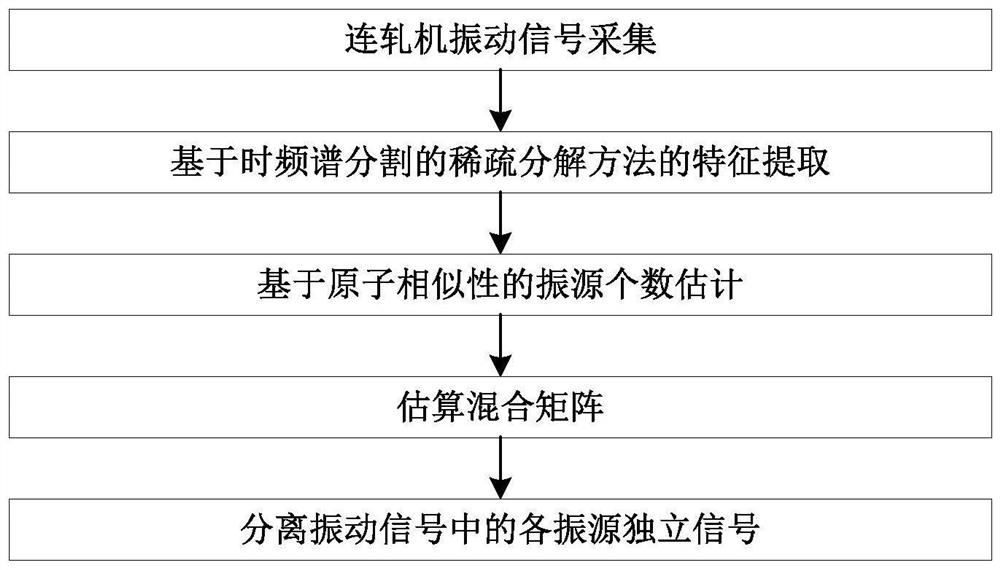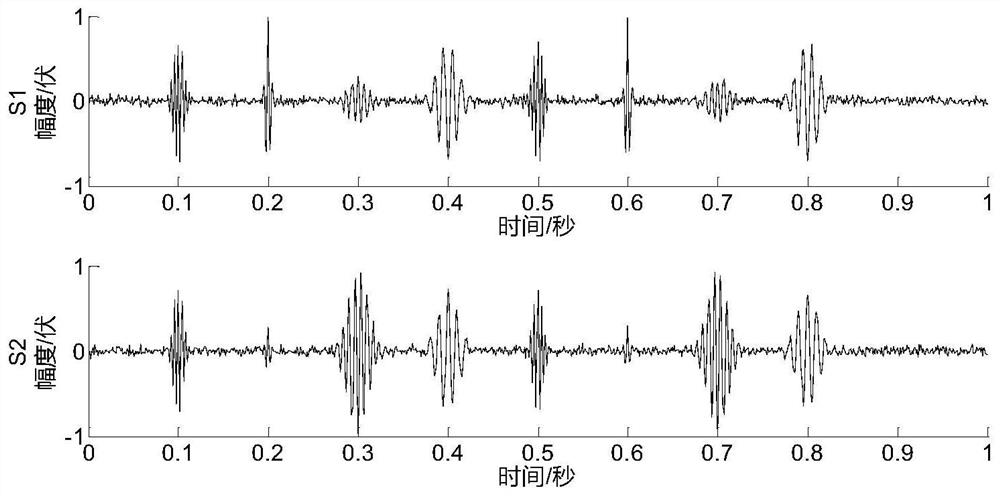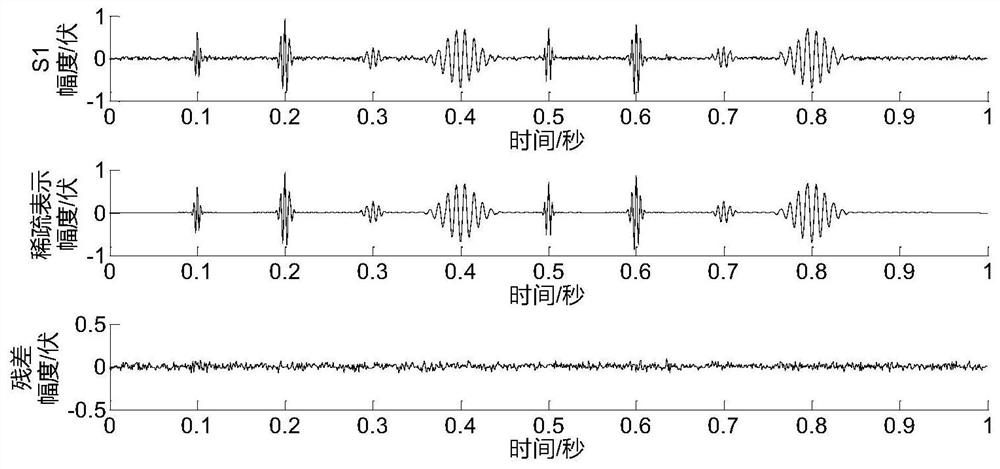A Separation Method of Continuous Rolling Mill Vibration Signals Based on Sparse Feature Similarity
A vibration signal, sparse feature technology, applied to vibration measurement in solids, measuring vibration, instruments, etc., can solve algorithm failure, poor estimation accuracy and robustness, unable to meet the independence assumption of independent component analysis algorithm, etc. problem, to achieve the effect of filtering out interference noise and improving accuracy
- Summary
- Abstract
- Description
- Claims
- Application Information
AI Technical Summary
Problems solved by technology
Method used
Image
Examples
Embodiment 1
[0077] Vibration signals of 4-stand continuous rolling mills (including 4 continuous rolling mills) are collected by acceleration sensors, and a vibration signal separation method of continuous rolling mills based on sparse feature similarity of the present invention is applied to effectively separate the vibration signals.
[0078] Such as figure 1 As shown, the specific method steps are as follows:
[0079] (1) Collect the vibration signal of the continuous rolling mill through the acceleration sensor:
[0080] Acceleration sensors are respectively arranged on the lower work roll chocks (two observation points) of the two continuous rolling mills F1 and F2 in the continuous rolling unit to collect the vibration signals of each vibration source when the rolling mill rolls steel; figure 2 Shown are the observation signals of the two channels (two sets of observation signals) collected at the above two observation points respectively, where S 1 is the vibration signal collec...
PUM
 Login to View More
Login to View More Abstract
Description
Claims
Application Information
 Login to View More
Login to View More - Generate Ideas
- Intellectual Property
- Life Sciences
- Materials
- Tech Scout
- Unparalleled Data Quality
- Higher Quality Content
- 60% Fewer Hallucinations
Browse by: Latest US Patents, China's latest patents, Technical Efficacy Thesaurus, Application Domain, Technology Topic, Popular Technical Reports.
© 2025 PatSnap. All rights reserved.Legal|Privacy policy|Modern Slavery Act Transparency Statement|Sitemap|About US| Contact US: help@patsnap.com



